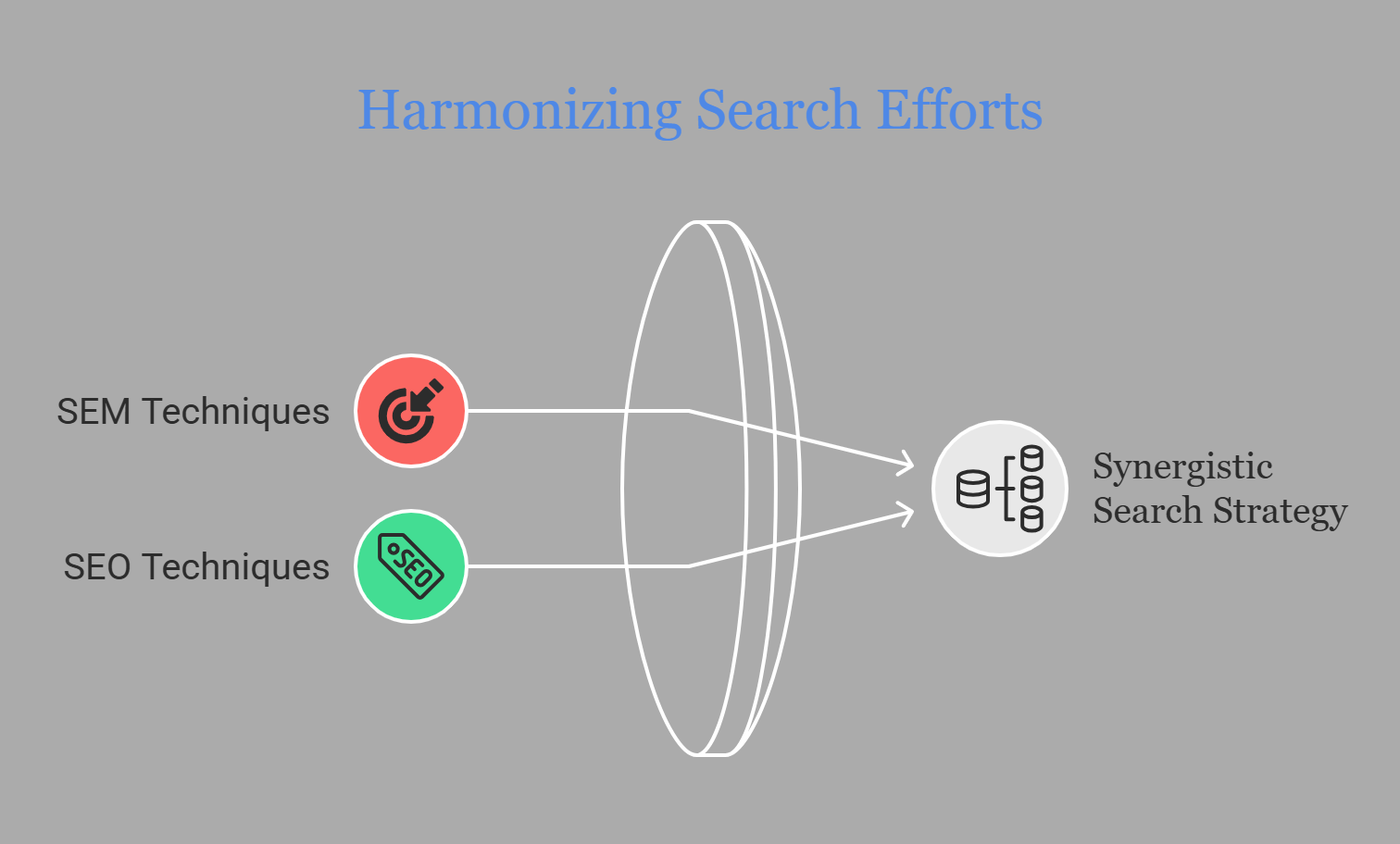I hope you enjoy reading this blog post.
If you want to get more traffic, Contact Us

Click Here - Free 30-Minute Strategy Session
Be quick! FREE spots are almost gone for this Month. Free Quote

Search Engine Marketing (SEM) and Search Engine Optimisation (SEO) are two core components of any robust digital marketing strategy. SEM involves paid strategies to increase a website’s visibility on search engine results pages (SERPs), including pay-per-click (PPC) advertising. Conversely, SEO focuses on organic strategies that enhance site ranking by improving its relevance and authority through methods like content optimisation and link building.
While both aim to drive traffic, their approaches differ fundamentally. SEM provides immediate visibility, while SEO builds sustainable, long-term growth. Together, they form complementary layers of a cohesive strategy, blending investment in paid search with organic efforts for broader reach.

Click Here – Free 30-Minute Strategy Session
Be quick! FREE spots are almost gone for this Month
Search Engine Marketing (SEM) is a digital marketing strategy aimed at increasing a website’s visibility in search engine results pages (SERPs) through paid advertising. Unlike organic search optimisation, SEM relies on paid placements, such as Google Ads, to target keywords relevant to the audience’s search intent.
SEM involves key components such as campaign setup, keyword bidding, ad creation, and performance analysis. Advertisers bid on keywords to secure ad placements, ensuring their content appears prominently. Tools like Pay-Per-Click (PPC) and ad extensions further enhance the approach. SEM requires strategic planning, targeting, and budget management to balance costs and effectiveness.
Search Engine Optimisation (SEO) refers to the practice of improving a website’s visibility on search engine results pages (SERPs) through organic, unpaid methods. It revolves around tailoring content and website structure to align with search engine algorithms, enhancing relevance and authority.
Key components of SEO include:
By targeting relevant keywords and improving user experience, SEO helps attract organic traffic over time.
Search Engine Marketing (SEM) and Search Engine Optimisation (SEO) differ fundamentally in their approach to driving website visibility and traffic.
Search Engine Marketing (SEM) offers businesses the ability to gain immediate visibility in search results by bidding on keywords and paying for ad placements. This approach ensures that ads reach specific target audiences based on demographics, interests, and search intent.
SEM effectively complements long-term SEO efforts, bridging gaps while building organic presence.
Search engine optimisation (SEO) offers sustained benefits for businesses aiming to enhance their online presence. It prioritises organic traffic, eliminating reliance on paid ads. By targeting relevant keywords, businesses attract qualified users actively seeking their products or services. Over time, this boosts trust and credibility.
Establishing authority within a niche is achievable through high-quality, optimised content, which improves search rankings. Unlike pay-per-click campaigns, SEO delivers long-term value by continuously generating traffic without recurring costs.
SEO also ensures higher visibility in local searches, crucial for brick-and-mortar establishments. With consistent optimisation, businesses secure a competitive edge while fostering authentic engagement with their audience.
Choosing between SEM and SEO depends on business objectives and the timeline for achieving results. SEO is ideal for long-term growth and establishing organic visibility. It works well for businesses aiming to build credibility or drive cost-efficient traffic over time. SEM suits short-term goals, such as launching promotions or gaining immediate visibility in competitive markets.
Combining SEM and SEO offers a comprehensive approach to increasing online visibility and driving targeted traffic. While SEO focuses on optimising website content and earning organic rankings, SEM utilises paid advertisements to capitalise on immediate opportunities. This fusion creates a balanced strategy that caters to both short-term and long-term goals.
To harness this synergy effectively:
By merging these disciplines seamlessly, businesses can maximise ROI, improve user engagement, and dominate search results.
Evaluating the performance of SEM and SEO campaigns hinges on tracking key metrics. For SEM, metrics such as click-through rate (CTR), cost-per-click (CPC), and quality score provide insights into ad efficiency and relevance. Additionally, conversion rate and return on ad spend (ROAS) measure how well paid efforts translate into tangible results.
For SEO, essential metrics include organic traffic, bounce rate, and time on page, which gauge website engagement. Keyword rankings and domain authority (DA) indicate long-term performance and search visibility.
Integrating analytics tools like Google Analytics and Search Console allows for real-time tracking, enabling adjustments to optimise strategies effectively.
Several organisations have successfully integrated SEM and SEO into their digital marketing strategies, demonstrating the power of collaboration.
These examples illustrate how a combined approach maximises reach and enhances conversion opportunities.
Search engine optimisation (SEO) and search engine marketing (SEM) are increasingly intertwined as digital landscape shifts towards integration. Emerging technologies, like artificial intelligence, are optimising processes for both. Voice search and mobile-first indexing drive SEO innovations, while SEM adapts to real-time bidding and audience targeting.
Key trends include:
The relationship between SEM and SEO is characterised by collaboration, ensuring more comprehensive visibility and engagement across evolving search mediums.
Optimising search strategies requires integrating both SEM and SEO for a cohesive approach. SEO builds organic visibility through relevant content, strong keyword research, and technical website optimisation. SEM complements this by driving immediate traffic with paid advertisements, targeting specific demographics and behaviours.
Businesses can benefit by combining long-term SEO efforts with SEM’s speed and precision, utilising the strengths of each method. Coordination allows data from one to inform the other, improving overall campaign efficiency. A well-balanced strategy ensures sustained visibility while adapting quickly to shifting market trends, yielding lasting impact across search landscapes.

LEAVE A REPLY